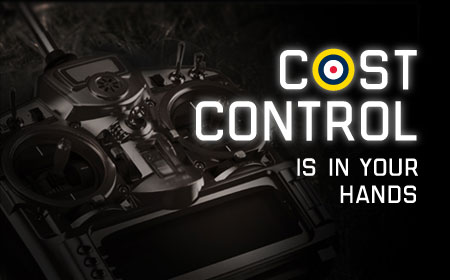
Cost control
Definition:-
Cost
control is the elimination or reduction of all unnecessary expenses without
sacrificing on quality served to the customer.
Types of Cost:-
•There are three types of cost
•A-Variable Cost (Direct Cost)
•B-Semi-Variable Cost (Indirect Cost)
•C-Fixed Cost
Variable cost:-
•Variable cost is directly linked with sales (Revenue).
•Most variable costs will go up or down to a greater or lesser
degree, as revenue go up or down.
•Examples of this type of cost would be (Food, Beverage and
Laundry)
Semi Variable Cost:-
•These costs are also directly linked with sales (Revenue) but
in proportion.
•Examples of this type of cost would be (Staff wages,
Operating supplies, Telephone, Maintenance and energy cost).
Fixed Cost:-
•Fixed costs are those that over the short run (one year or
less) does not change or vary with volume of sales.
•Examples of this type of cost would be (Insurance, Management
salaries, Interest, Property tax and depreciation.
Food Cost:-
•Food represents the largest single item of expenditure in the
food services business, something like 35 to 50 percent of the total income. It
is the commodity on which the entire business is based.
•Although careful and intelligent purchasing of food is
necessary. It is equally or perhaps even more important that great care and
planning be used in the storage, preparation and service.
•Food cost percentages vary in different eating establishment,
depending on the:
•Type of operation
•The clients
•The menu
Causes of High Food Cost:-
•Failure to consider the time of the day, day of the week,
holidays, weather and temperature.
•Too many or too few items on the menu.
•No balance between low and high cost items.
•Poor promotion of low cost items.
•No consideration of food supplies available in the market.
•Poor pricing of the menu items.
•No consideration of type and amount of equipment needed to
process the menu items.
•No consideration of type and amount of labor.
•Theft.
Profit Cycle:-
•The profit cycle is a basic understanding of business. It is
an overview of the relationships between assets, liabilities and capital. In a
business, the assets are things that the business owns. The capital or sales is
the money from the customer. Liabilities or (losses) occur when we use up
assets and make no profit.
• Profit = Sales - Expenses + Losses
(Money from the customer) (Food Cost) (Wastage, Spoilage, Theft)
• Assets = Losses + Sales
(Profit) (Lake
of Control) (Capital)
• Inventory Waste Money we get from custumers
• Equipment Spoilage •Money
Labor Breakage
Money Labor Theft
Formula's:-
•In the kitchen it will often become necessary for the chef to
work with percentage. Often he will need to calculate and apply a yield
percentage or food cost percentage. It can be helpful in these cases to
remember the following formulas;
•Percent= Part / Whole
•Part = Whole x Percent
•Whole= Part / Percent
Cost of Sale
•Opening inventory (Product on hand in
the kitchen and storeroom)
•+ Purchases (From supplier invoice)
•+ Transfer into the kitchen (From other
production area or restaurant)
•= Total available stock (Total amount
of product in the restaurant available to produce food sale)
•- Closing inventory (Product remaining
in the storeroom and kitchen)
•= Product used (This amount of product
is no longer in the restaurant, having been used out of inventory)
• - Food product used to feed employees
(free of charge)
•
-Food product used for promotion (ENT)
•
-Food product that was transferred out of inventory
• = Cost of the restaurant for the raw
materials (edible product) that was used to produce sales of food only.
No comments:
Post a Comment